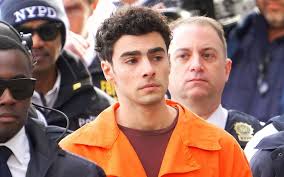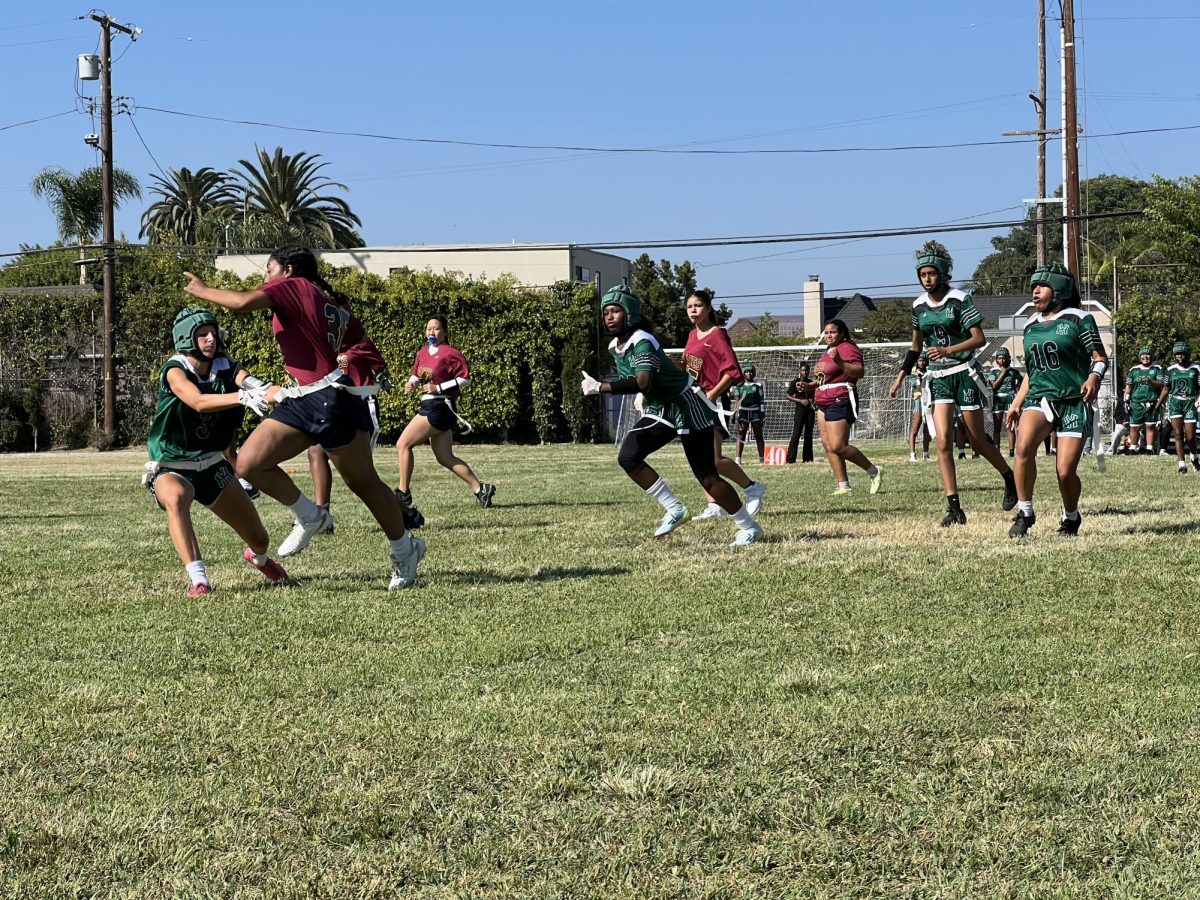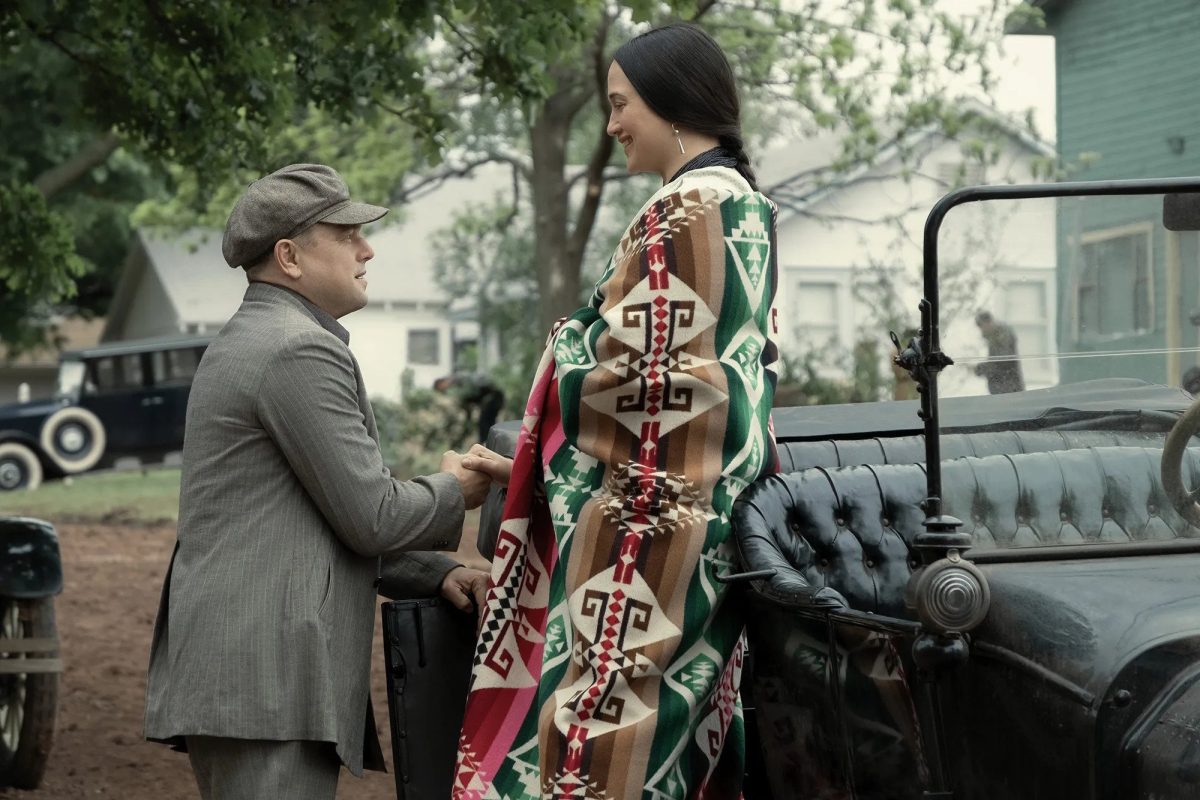*Warning: the following review contains spoilers.
Based upon a book and historical events, “Killers of the Flower Moon” depicts the series of murders of the Osage people in 1920s Oklahoma, reported by contemporary media as the “Reign of Terror.” White Americans violently targeted the Osage Nation and its newly discovered vast oil deposits. They hoped to politically control the profitable region and exploit the Osage who received oil royalties.
Leonardo DiCaprio stars as Ernest Burkhart, a WWI veteran who’s invited to Oklahoma by his businessman uncle William Hale. Hale ropes Ernest into his scheme of gaining further control of the Osages’ oil profits as Ernest grows closer to the Osage community. DiCaprio’s performance in this film was the first time I noticed an actor’s intentional tics. His slightly puffed mouth, hunched posture, and nervous fiddling bring to life this self-conscious, morally ambiguous anti-hero. Recent popular roles have seemed to blend together in personality — from Robert Downey Jr.’s Lewis Strauss in “Oppenheimer” to John David Washington’s Joshua in “The Creator” — but DiCaprio clearly differentiates this character from his diverse array of credits.
Lily Gladstone’s portrayal of Mollie Burkhart, one of the many Osage recipients of oil royalties and Ernest’s wife, wrenches audiences’ hearts. Her strength despite both her diabetic condition and endless grief for her murdered family visibly wearing away at her is astonishing. Also to be admired is her determination to bring the newly established Bureau of Investigations (later the FBI) to investigate the Osage murders. Typically a woman of few words and emotional displays, her raging anguish as a daughter, mother, and sister watching her loved ones fall to injustice is even more gripping.
Director Martin Scorsese’s masterful construction of a multilayered scene is most evident in Ernest and Hale’s exchange after Ernest learns that his child died from lung disease. At first glance, this is an emotionally charged scene of a man grieving his daughter as his own father shares his pain. However, the story’s context reveals its indication of how the blood on Ernest’s hands has come back to haunt him. In striking parallelism, Ernest experiences the same anguish and excruciating pain of child-loss that every other Osage parent toiled through due to his actions. As such, the audience is torn between sympathy for Ernest and scoffing apathy at his deserved pain.
The complexity of this scene is just one example of how Scorsese creates multifaceted characters and sequences in “Killers of the Flower Moon”. Like the dust-filled, hazy backdrop of this Western drama, no character is clearly motivated and black and white. In this diaspora of white Americans on Osage land, each must confront their loyalties to the people they love on either side and their sense of morals in being complicit in the mass murders of Osage people.
The film’s 3 hours and 26 minute-runtime certainly demands audiences’ attention. However, even reading The New Yorker’s excerpt from the original book would inform viewers that such commitment was necessary to tell the deeply personal story of Osage perseverance. In a similar vein, extensive collaboration between the Osage Nation and the production team supported this more historically accurate depiction. Osage language coaches prepared Robert De Niro to speak the still-preserved language, and artisanally crafted Osage clothing is featured.
Although the College Board’s APUSH curriculum explores the livelihoods of different American Indian cultures before European arrival to some extent, all mentions of such peoples vanish with the turn of the 20th century. “Killers of the Flower Moon” is a stark reminder that the story of American Indian peoples on the soil we live on does not end with industrialization. Their triumphs, tragedies, and diverse cultural perseverance in the present era continue to shape American history today.
*****
ERNEST: You know, you got, you got nice color skin. What color would you say that is?
MOLLIE: My color.



















